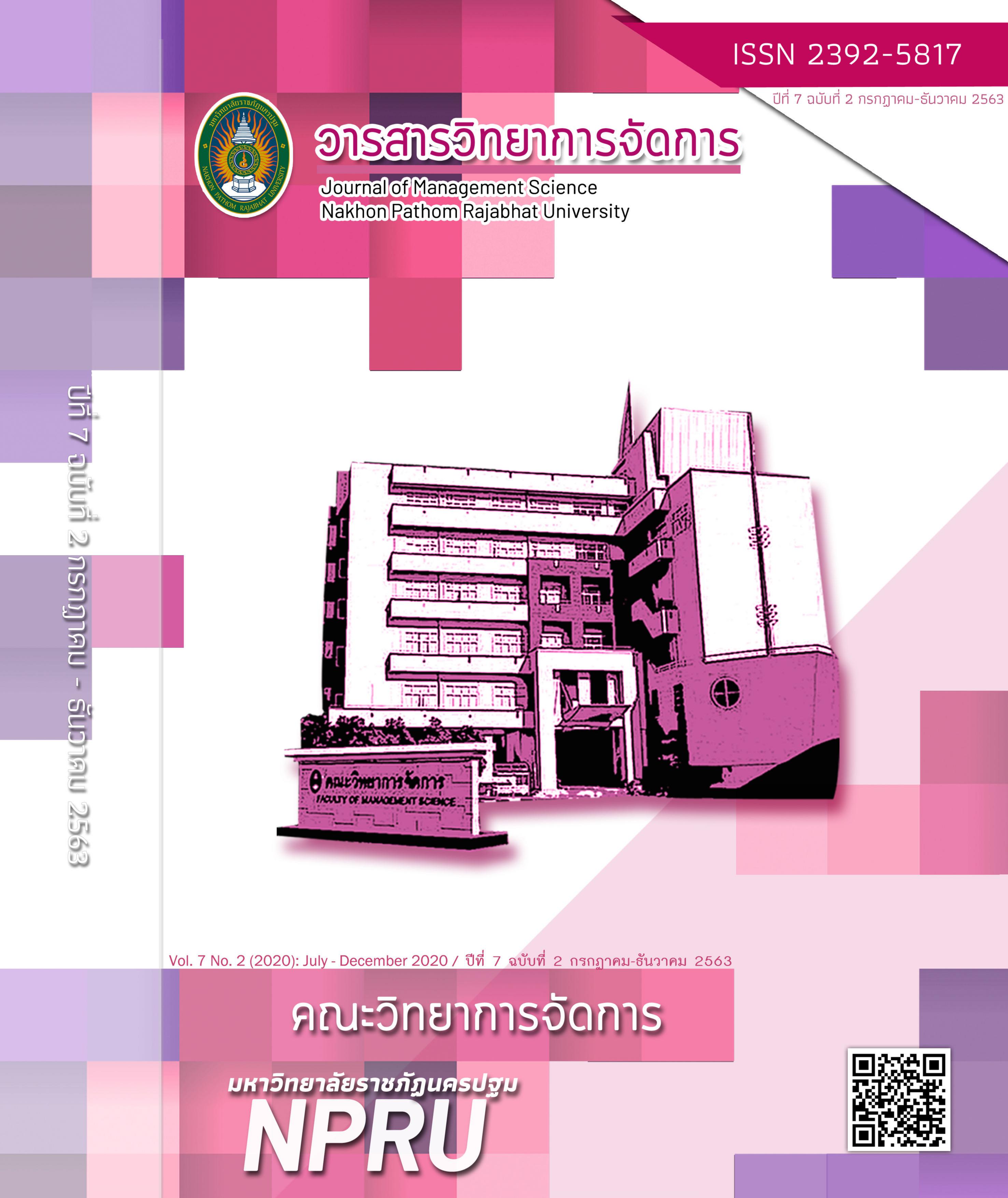The Effect of Corporate Social Responsibility and Creating Shared Value in Thailand
Main Article Content
Abstract
This research has objectives 1. To study corporate social responsibility and creating shared value in Thai listed companies, 2. To examine the effect of corporate social responsibility on creating shared value in Thai listed companies. The population and sampling are 362 companies listed on the Stock Exchange of Thailand consisting of 7 industries such as; 1) agro and food industry 2) consumer products 3) industrials 4) property and construction 5) resources 6) service and 7) technology, not include the group of financial business, securities business, banking and insurance business and company under rehabilitation. The disclosure of corporate social responsibility will define the scope of the data used as of December 31, 2018. Data analysis was done using the multiple regression analysis.
The results showed that
1. Corporate social responsibility and creating shared value in Thai listed companies to create a competitive advantage of the business sector to achieve long-term profits and meet the needs of society.
2. The study found that the relationship between the corporate social responsibility disclosure and creating shared value. The creating shared value was a new method to solve social problems through the expertise and organization resources in order to form the business opportunities. Thus, this was different from social responsibility which was only the image and reputation forming as the factors toward sustainable development. Therefore, companies in Thailand shall adopt both concepts of corporate social responsibility and creating shared value to connect and adapt in order to reach toward the highest profits. Also, this would be a part of the society to help solving social and environmental problems.
Article history: Received 20 August 2019
Revised 20 October 2019
Accepted 22 October 2019
SIMILARITY INDEX = 0.00 %
Article Details
The views and opinions of the article appearing in this journal are those of the author. It is not considered a view and responsibility of the editorial staff.
References
Aupperle, K. E., Carroll, A. B., and Hatfield, J. D. (1985). An empirical examination of the relationship between corporate social responsibility and profitability. Academy of Management Journal, 28(2), 446–463.
Archel, P. (2003). Social and environmental information reporting of big size Spanish firms in the period 1994-1998. Spanish Journal of Finance and Accounting, 32(117), 571-601.
Carroll, A. B. (1979). A three-dimensional conceptual model of corporate performance. Academy of management review, 4(4), 497-505.
Carroll, A. B., Lazarevich, V. D., and Gardner, M. R. (1983). U.S. Patent No. 4,384,201. Washington, DC: U.S. Patent and Trademark Office.
Deegan, C., and Gordon, B. (1996). A study of the environmental disclosure practices of Australian corporations. Accounting and business research, 26(3), 187-199.
Gray, R., Kouhy, R., and Lavers, S. (1995b). Constructing a research database of social and environmental reporting by UK companies. Accounting, Auditing and Accountability Journal, 8(2), 78-101.
Hackston, D., and Milne, M. J. (1996). Some determinants of social and environmental disclosures in New Zealand companies. Accounting, Auditing and Accountability Journal, 9(1), 77-108.
Khemir, S., and Baccouche, C. (2010). Analysis of the determinants of corporate social responsibility disclosure in the annual reports of Tunisian listed firms. In Research in Accounting in Emerging Economies (pp. 119-144). Emerald Group Publishing Limited.
Kolk, A., Walhain, S., and Van de Wateringen, S. (2001). Environmental reporting by the Fortune Global 250: exploring the influence of nationality and sector. Business strategy and the environment, 10(1), 15-28.
Kuasirikun, N., and Sherer, M. (2004). Corporate social accounting disclosure in Thailand. Accounting, Auditing and Accountability Journal, 17(4), 629-660.
Mathews, M. R. (1995). Social and environmental accounting: A practical demonstration of ethical concern?. Journal of Business Ethics, 14(8), 663-671.
Menassa, E. (2010). Corporate social responsibility: An exploratory study of the quality and extent of social disclosures by Lebanese commercial banks. Journal of Applied Accounting Research, 11(1), 4-23.
Porter, M. E., and Kramer, M. R. (2011). The big idea: Creating shared value, rethinking capitalism. Harvard business review, 89(1/2), 62-77.
Visser, W. (2008). Corporate social responsibility in developing countries. In The Oxford handbook of corporate social responsibility.
Wheeler, D. , Fabig, H. and Boele, R. ( 2002). Paradoxes and dilemmas for stakeholder responsive firms in the extractive sector: Lessons from the case of Shell and the Ogoni. Journal of Business Ethics, 39, 297-318.
Wongprasert, R. (2013). Creating shared value: Good practice for society. Executive Journal, 33(3), 75-81.
Yonwikai, W. (2014). The Evolution of Creating Shared Value. Executive Journal, 34(2), 116-125.


